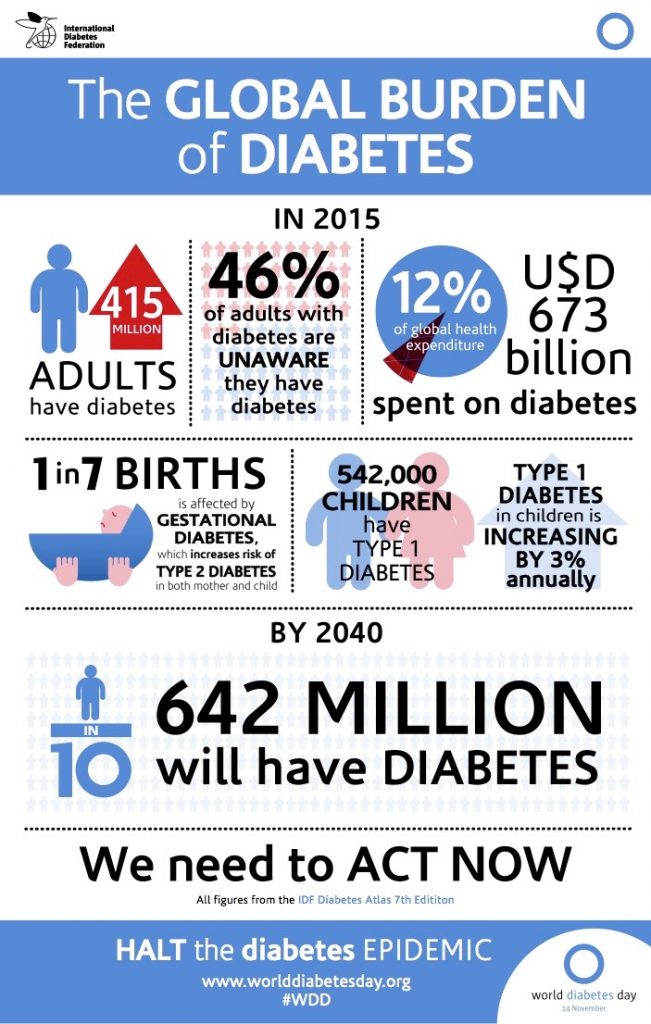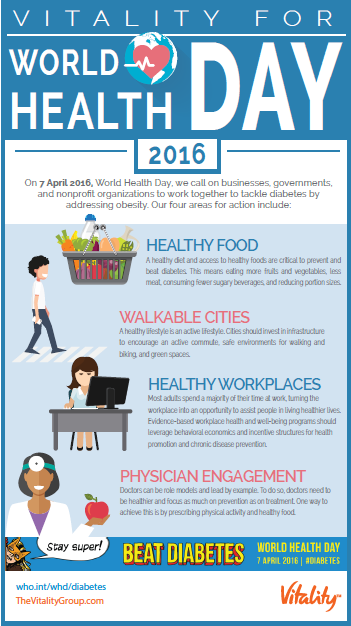April 7 marks the World Health Organizations (WHO) World Health Day. This years theme Beat Diabetes comes at a critical time when 415 million people are affected by diabetes worldwide. The campaign aims to curb the proliferation of Type 2 diabetes cases, which are expected to double by 2030, by scaling up prevention efforts, strengthening health care systems, and enhancing surveillance. As a result, the WHO is in the process of developing the first ever global report on diabetes.
Diabetes is a chronic metabolic disorder whereby elevated blood sugar levels leads to serious complications including heart, blood vessel, eye, kidney and nerve damage. It claims 1.5 million lives every year, 80% of which occur in developing countries where three quarters of the total population with diabetes live.
Ninety percent of all diabetes cases are Type 2 diabetes. Similar to other chronic conditions, many of the underlying risk factors are preventable. According to the International Diabetes Federation, exercising just 30 minutes a day can reduce the risk of developing Type 2 diabetes by 40%. Maintaining a balanced diet, regular and adequate sleep, and minimizing stress may also prevent or delay the development of Type 2 diabetes.
The global community has been developing innovative ways to prevent and better manage diabetes. In this new digital era, wearable devices and mobile technology can be useful in initiating and tracking lifestyle changes, retrieving up to date information, and sharing critical health information.
Women can also serve as an impetus for diabetes prevention and management. Studies show that women are the main healthcare decision makers in families. Despite an increasing number of women in the workforce, women are still largely in control of feeding, meal preparation, providing care to the sick and elderly, determining healthcare needs, implementing health care policy in their families, and circulating health related information within their social networks. We know that educating women improves the health of their families and future generations. We also know that improved education is linked to lower risk for disease. Harnessing the multifaceted influences that women yield over families has a ripple effect in the prevention and management of chronic diseases, including diabetes.
Public health organizations must understand how women, in their unique cultural contexts, prioritize the needs of their families when competing, even life-threatening circumstances may interfere. In order to successfully reach the most vulnerable populations, addressing these challenges through a gender-sensitive lens is critical to reducing the global burden of disease.
Reaching the WHOs goal to control the spread of diabetes, particularly in low- and middle-income countries, will require that organizations access the most influential resources to improve health behaviors in communities across the world. When it comes to diabetes, a disease that is highly correlated with modifiable risk factors like diet and exercise and relies on strict adherence and maintenance routines, recognizing the importance of women as health leaders and decision makers can mean the difference between beating diabetes and not.

Click here for an infographic for World Health Day 2016 (shown on the right) with four actions governments, NGOs, and private sector companies can take to improve health on a broader scale.
The infographic below is more specific to diabetes.

Infographic source: International Diabetes Federation (IDF)
Thumbnail credit: World Health Organization (WHO)







